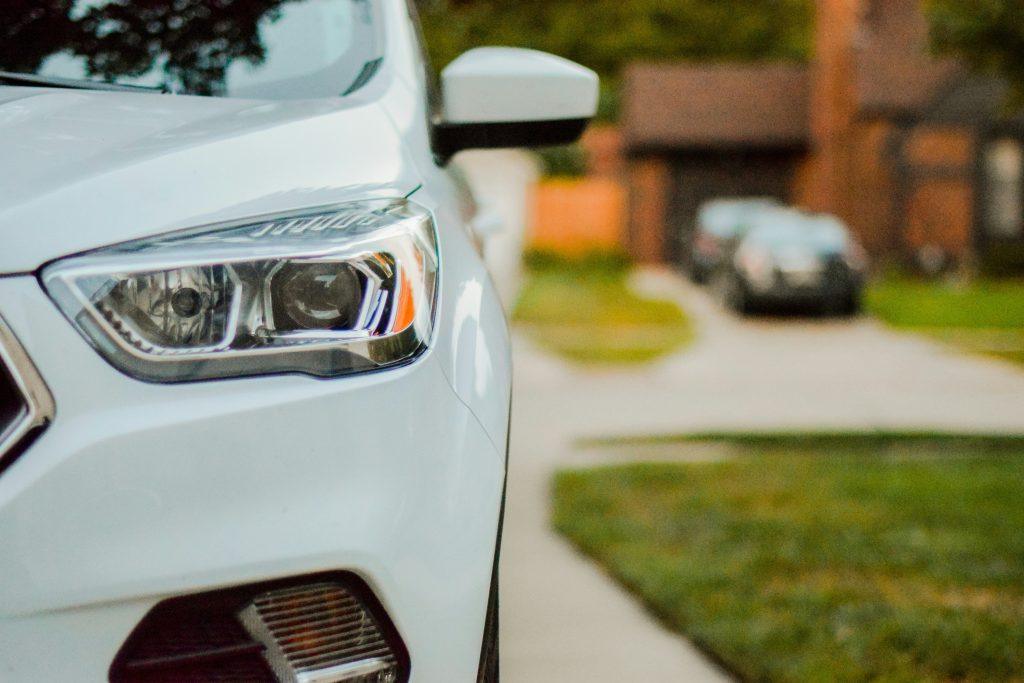Car insurance deductible is the amount you pay out of pocket before your insurer covers the rest on collision or comprehensive claims. It doesn’t apply to liability. Choosing a $500 vs. $1,000 deductible affects your premium and what you owe after a crash or hailstorm.
At a Glance
- Pick the highest car insurance deductible you can cover in cash, so you save monthly without risking debt after a claim.
- Deductibles apply to collision and comprehensive, not liability. Glass can be zero-deductible in some states or with special endorsements.
- Raising a deductible lowers premium; pair it with discounts to avoid paying more long-term than you save monthly.
- Always compare your options before making a decision.
Your car insurance deductible is a lever. Pull it up or down and your monthly price and your cost at claim time change. If you drive a paid-off car, have an emergency fund, or barely drive, that lever can save you real money. If you commute daily or have a teen driver, the wrong number can sting. This guide breaks down what a car insurance deductible is, when it applies (and when it doesn’t), how it changes your premium, and how to choose the right amount for your budget and car. Then we’ll show you how to compare that choice across carriers with Finhabits in minutes.
What a car insurance deductible is and when it applies
Think of your deductible as your share of repairs on your own car. It applies to collision (crashes) and comprehensive (non-crash events like theft, hail, fire, falling objects, animal strikes). Liability coverage, which pays others you injure or damage, usually has no deductible. Personal Injury Protection and MedPay sometimes have no deductible either, depending on your state. If you’re not at fault, the other driver’s insurer may pay everything. If you use your insurance first, you might pay the deductible, then get reimbursed through subrogation.
For a deeper look at coverage parts, see what full coverage car insurance really covers. And if you’re unsure about legal minimums, review do you have to carry car insurance laws.
Why it matters: deductibles change what you pay now and later
Your deductible shapes two costs: your monthly premium and your out-of-pocket bill after an accident. A $500 deductible typically costs $15–$35 more per month than a $1,000 deductible, but saves you $500 at claim time. That’s $180–$420 per year in extra premiums to protect against a $500 hit. If you drive cautiously and claim rarely, the math favors the higher deductible. If you commute 50 miles daily through traffic or have a new driver at home, the lower deductible might be worth it.
Collision vs. comprehensive: glass, hit-and-run, and exceptions
Collision covers damage from crashes, even if it’s a single-car curb bump. Comprehensive handles weather, theft, vandalism, and animals. Windshield claims often fall under comprehensive—and many states allow zero deductible glass, or you can add a glass endorsement to lower or waive the deductible on glass-only claims. Hit-and-run? If the other driver can’t be identified, you may use collision (deductible applies) or Uninsured Motorist Property Damage if your state and policy include it.
What to do: choose a deductible that matches your cash cushion and risk
Start with what you can pay on a bad day. If you have a $1,500 emergency fund, a $1,000 deductible could work; if your cushion is $400, consider $250–$500. Newer or financed cars often stick with $500–$1,000 because lenders limit changes. Older cars worth $3,000 or less? A $1,000–$2,000 deductible—or dropping collision and comprehensive—can make sense if you could replace the car without hardship. Drive rarely? A higher deductible may be smart. Teen driver at home? Consider $500–$1,000 to avoid painful out-of-pocket hits.
Then compare the exact premium change across carriers.
Deductible vs premium: real tradeoffs, waivers, and surcharges
Higher deductibles lower premiums. A move from $500 to $1,000 might save $15–$35 per month, but it varies by car, driver, and state. Some carriers offer “vanishing deductible” credits that reduce your deductible over time for safe driving. Others offer a “deductible waiver” for certain scenarios (not-at-fault accidents or specific glass claims). After an at-fault claim, your premium can increase—a surcharge—for three to five years. That’s why you shouldn’t file tiny claims that cost more in surcharges than the repair itself. Stack smart discounts using auto insurance discounts you might be missing.
Sample claim math: $250–$2,500 deductible scenarios
These figures are for illustrative purposes only and do not reflect actual costs. The math simply helps clarify the concept.
$600 bumper scrape (collision): $250 deductible → you pay $250; insurer $350. $1,000 deductible → you’d pay all $600; you might skip the claim.
$1,500 hail repair (comprehensive): $500 deductible → you pay $500; insurer $1,000. $1,000 deductible → you pay $1,000; insurer $500.
$3,500 fender bender (collision): $500 deductible → you pay $500; insurer $3,000. $1,000 deductible → you pay $1,000; insurer $2,500.
If raising your deductible saves $25/month ($300/year), and you rarely claim, the higher deductible may win. But if you’d need a credit card to cover $1,000, the stress may not be worth $10–$15/month in savings. Run the numbers and, if needed, switch car insurance without gaps.
Frequently Asked Questions
What is a car insurance deductible and how does it work?
A car insurance deductible is your share on collision or comprehensive claims. Example: $2,000 repair with a $500 deductible means you pay $500 and the insurer pays $1,500. Liability typically has no deductible, because it covers others’ injuries or property, not your car.
Do I pay a deductible if I’m not at fault?
If the other driver’s insurer accepts fault, you usually don’t pay. If you use your policy first, you might pay the deductible, then get refunded after your insurer collects from the at-fault carrier through subrogation. States differ, so keep documentation and police reports when possible.
What deductible should I choose for full coverage?
Start with what you can pay on a bad day. Many drivers pick $500–$1,000. If your car is older or low-value, higher deductibles (or dropping collision and comprehensive) can be reasonable. Cross-check the premium impact using a comparison tool before changing anything.
Should I choose a high or low deductible for car insurance?
Choose the highest deductible you can afford to pay from your emergency fund. A high deductible lowers your monthly premium and saves money over time if you avoid frequent claims. A low deductible costs more each month but reduces your out-of-pocket cost at claim time. The best choice depends on your cash cushion, driving pattern, and risk tolerance.
What happens if my claim is less than my deductible?
If damage costs less than your deductible, you pay the entire repair yourself and your insurer pays nothing. For example, a $400 bumper scrape with a $500 deductible means you cover all $400. Many drivers skip filing small claims to avoid premium surcharges that can last three to five years and cost far more than the repair.
Turn your deductible choice into real savings
See the monthly price difference between $500 and $1,000 across top carriers, then stack the right discounts—without coverage gaps or surprises at claim time.
Conclusion
A car insurance deductible is your cost lever set it wisely and you can lower premiums without risking a nasty bill after a crash or hailstorm.
Match your deductible to your emergency fund, car value, and driving pattern. Avoid small claims that cost more in surcharges than they save.
Next step: compare $500 vs. $1,000 across carriers with Finhabits, review typical car insurance costs by state, then tune your discounts.
You’ve got this clear numbers, smart tradeoffs, and coverage that actually protects your wallet.




